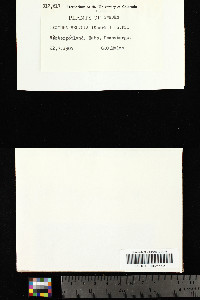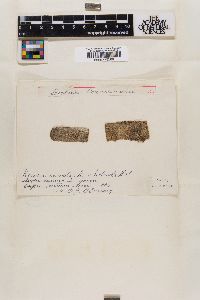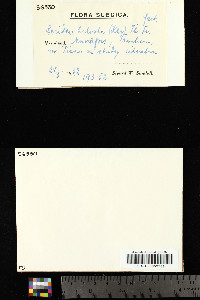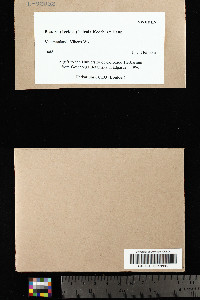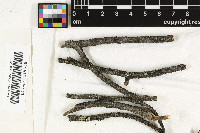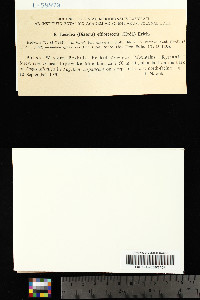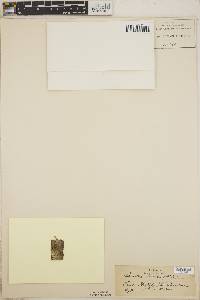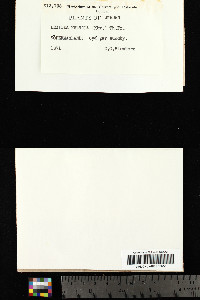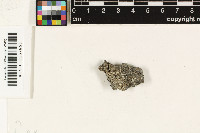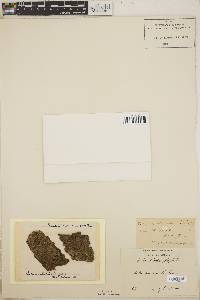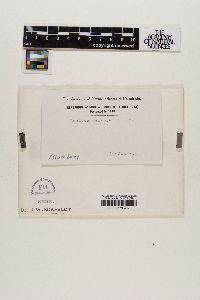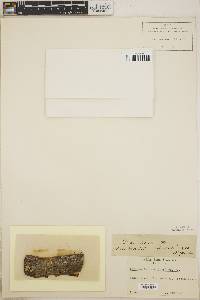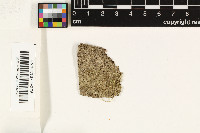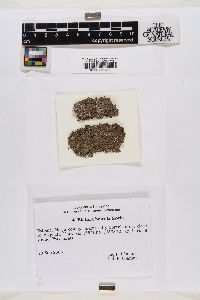
Consortium of Lichen Herbaria
- building a Global Consortium of Bryophytes and Lichens as keystones of cryptobiotic communities -
- Home
- Search
- Images
- Species Checklists
- US States: O-Z >
- US National Parks
- Central America
- South America
- US National Parks
- Southern Subpolar Region
|
|
|
|
Family: Ramalinaceae
[Lecidea helvola (Körb. ex Hellb.) Th. Fr., moreLecidea helvola f. helvola (Körb. ex Hellb.) Th. Fr., Lecidea helvola subsp. helvola (Körb. ex Hellb.) Th. Fr., Lecidea helvola var. helvola (Körb. ex Hellb.) Th. Fr.] |
Life habit: lichenized (mutualistic with algal photobionts) thallus: crustose (crustaceous) endosubstratal, inconspicuous, immersed | crustose (crustaceous) episubstratal unspecified thallus: compartimentized areolate, squamulate [th] upper surface: grey(ish) | green(ish) grey | white(ish) grey | grey(ish) green [th marginal and upper surface] specific structures: absent [th] morphol substructures (eg areoles, lobes, branches) width [mm]: (low) 0.1 (high) 0.3 [th] morphol substructures (eg areoles, lobes, branches) upper surface: verrucose, warted ascomata: absent | present ascoma: apothecial, apothecioid hymenial ascoma [mm]: (low) 0.3 (high) 0.5 (max) 0.8 ascoma: subsessile, subimmersed, adnate, semi-immersed, emergent | sessile, superficial [ascm, if apoth] disc, mazaedium: subconvex, slightly convex [ascm, if apoth] disc, mazaedium: brown(ish) (if pale: fawn, tan; if mid: cinnamon) | yellow(ish) brown | red(dish) brown (if pale: orange brown) | yellow(ish) white (ivory, off-white, cream-coloured) [ascm, if apoth] subhymenial layers, hypothecium; [if perith] basal excipulum: yellow(ish) (if dull: buff) | hyaline, colourless [ascm] paraphyses/-oids: present [ascm] epihymenium, epithecium: hyaline, colourless asci: lecanoralean [asc] tholus: thickened [asc] tholus amyloidity (iodine reaction): present [asc] tholus amyloidity pattern: amyloid with acuate axial body towards the apex (= Bacidia-, Buellia-, Ramalina-types etc) ascospores: (median) 8.0 [asp] shape: narrowly ellipsoidal [asp] length [µm]: (min) 8.5 (low) 10.2 (high) 14.2 (max) 17.5 [asp] width [µm]: (min) 3.0 (low) 3.4 (high) 4.5 (max) 5.0 [asp] septa: absent spore lumen unilocular, monolocular | present [asp] septa: transversely septate [asp] transversal septa: (median) 0.0 (max) 1.0 [asp] pigmentation: hyaline, colourless [asp] perispore, epispore: not apparent secondary metabolites: present secondary metabolites: gyrophoric acid | lecanoric acid primary photobiont: present secondary photobionts (eg in cephalodia): absent primary photobiont: chlorophytaceous trebouxiaceous, chlorococcoid. substrate: bark, cork, plant surface trunks, branches, twigs. Thompson, J., 1997. American Arctic Lichens: The Microlichens. Thallus thin, verruculose or slightly so, gray-white or blue-white, lacking soredia; hypo-thallus indistinct. Apothecia small, to 0.5 mm, sometimes tuberculose and then to 1 mm, broadly attached; margin thin, concolorous with disk, disappearing; disk commonly depressed-convex becoming convex, brick-colored or brick-red; hypothecium pale to brownish, upper part of vertical hyphae; epihymenium pale; hymenium 45-50 μm, hyaline, 1+ blue turning red; paraphyses gelatinous, tips not thickened; asci clavate; spores oblong to slightly ellipsoid, 11-14 X 4-5 μm. This species grows on the bark of trees, especially conifers such as Abies and Picea, less often on Betula and Alnus. It is circumpolar boreal. |
|
|
|
Powered by Symbiota




